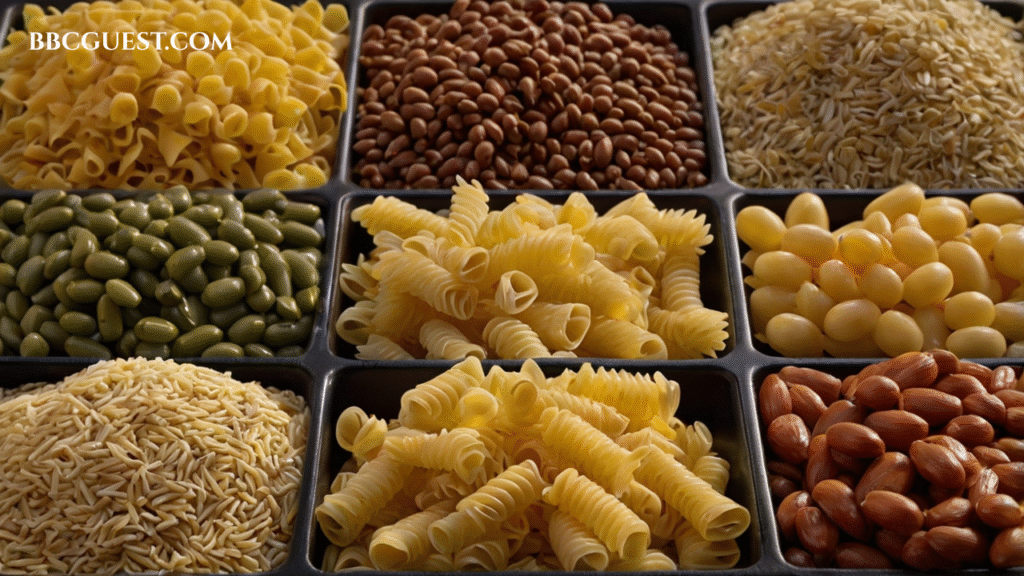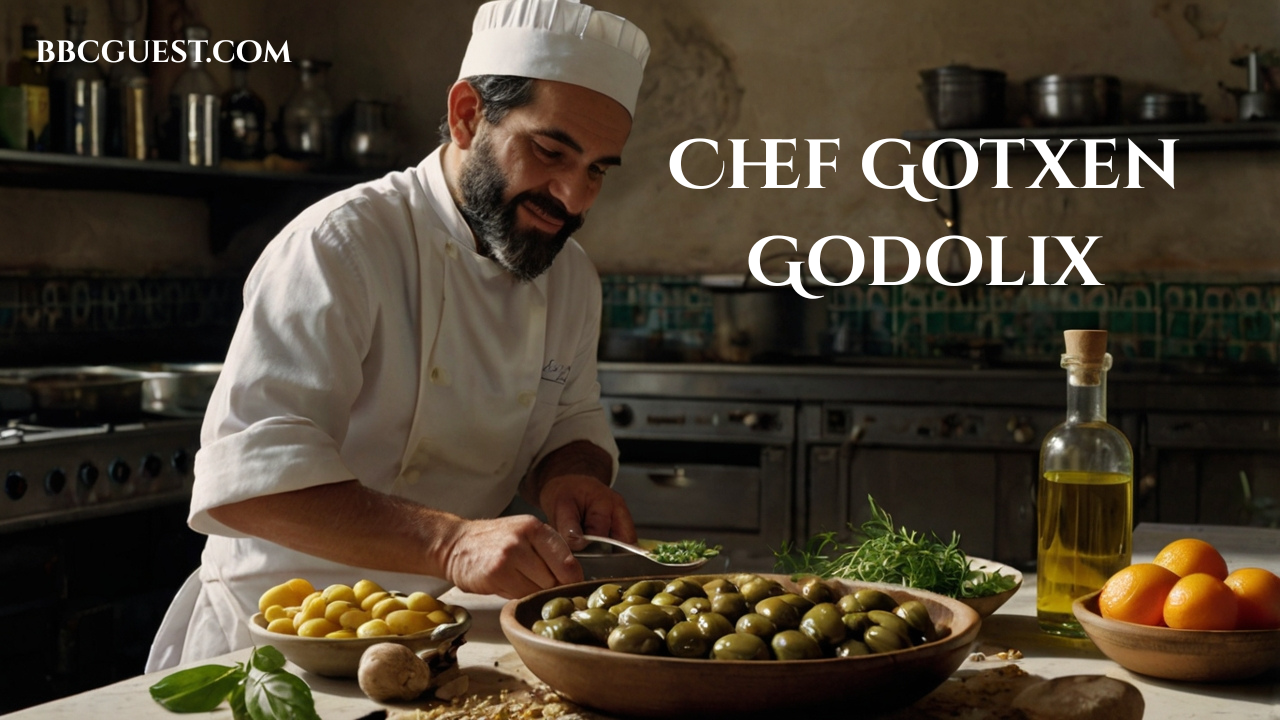At the heart of Mediterranean cuisine lies a perfect harmony of flavors, ingredients, and techniques drawn from the sun-drenched coasts of Southern Europe, North Africa, and the Middle East. As culinary enthusiasts, we embrace this vibrant, health-forward tradition to explore the delicious intersections of olive oil, fresh herbs, seafood, and seasonal vegetables. Our deep dive into the secrets of Chef Gotxen Godolix’s kitchen reveals a world of culinary precision and tradition.
The Foundation: Fresh, Local, and Seasonal Ingredients
One cannot understand Mediterranean cooking without recognizing the importance of fresh, seasonal ingredients. Every dish starts with the land and the sea. Extra virgin olive oil, the cornerstone of almost every recipe, is not just a fat—it’s a flavor enhancer and a nutritional powerhouse.
We use:
- Ripe tomatoes bursting with sweetness.
- Herbs like basil, oregano, and thyme, are hand-picked and aromatic.
- Fresh seafood, from octopus to sardines, caught that very morning.
- Stone fruits and citrus, add natural acidity and balance.
By centering meals around vegetables, legumes, and whole grains, we mirror the health benefits of the Mediterranean diet, which is known to reduce heart disease and promote longevity.
The Art of Tapas and Meze: Small Bites, Big Flavor
Mediterranean cuisine shines in its tapas (Spain) and meze (Greece, Turkey, Lebanon) traditions. These small plates are not just appetizers; they are expressions of regional identity.
Key highlights include:
- Spanish Patatas Bravas with smoked paprika aioli.
- Greek Dolmades, vine leaves stuffed with rice, pine nuts, and dill.
- Moroccan Zaalouk, a smoky eggplant and tomato salad spiced with cumin and coriander.
- Turkish Sigara Börek, crispy phyllo rolls filled with feta and herbs.
These dishes celebrate community and shared meals, a central tenet of Mediterranean dining culture.
Pasta, Grains, and Legumes: The Mediterranean Carbohydrate Trinity

Unlike the carb-heavy fare found elsewhere, Mediterranean grains are treated with balance and respect. Pasta is al dente and often paired with light, herby sauces. Legumes are rich sources of protein and fiber.
We masterfully prepare:
- Italian Puttanesca, where briny capers and anchovies meet sweet San Marzano tomatoes.
- Egyptian Koshari, a blend of lentils, rice, pasta, and spicy tomato sauce.
- Provencal Socca, a chickpea flatbread cooked until golden in a cast-iron pan.
- Spanish Paella, saffron-kissed rice adorned with seafood and peas.
Every grain dish is enhanced with spices, citrus zest, and a drizzle of olive oil, achieving richness without heaviness.
Proteins in Harmony: Seafood, Poultry, and the Occasional Red Meat
We emphasize lean proteins in Mediterranean dishes. Grilled seafood, roasted chicken with lemon and herbs, and lamb kofta with sumac and parsley are staples.
Our cooking methods prioritize:
- Grilling over charcoal, which adds complexity without extra fat
- Braising in wine and aromatic broth, ensuring tenderness
- Spice rubs and marinades, drawing from both Eastern and Western Mediterranean traditions
From Tunisian Harissa-rubbed lamb to Greek lemon-oregano chicken, we balance flavor with health-conscious methods.
Mediterranean Sauces and Condiments: The Flavor Multipliers
No dish is complete without the finishing touch. Sauces and dips define Mediterranean cuisine, turning simple meals into extraordinary experiences.
We perfect:
- Tzatziki, a Greek yogurt dip with cucumber and garlic
- Aioli emulsified garlic and oil with a creamy texture.
- Chermoula, a North African marinade with cilantro, preserved lemon, and spices
- Muhammara, a roasted red pepper and walnut dip from Syria
These condiments add depth, acidity, and texture, essential for a balanced Mediterranean plate.
The Role of Bread and Olive Oil: Ancient Staples, Modern Classics
Bread is sacred in Mediterranean cultures. From Italian focaccia to Moroccan khobz, it’s both a vessel and an ingredient. We always serve warm, crusty bread alongside cold-pressed olive oil, often infused with herbs or balsamic vinegar.
Types we prepare:
- Sourdough rounds with rosemary
- Pita puffed and pocketed, perfect for scooping hummus.
- Pane Carasau, thin Sardinian flatbread ideal for layering with cheese and meats
These breads are handcrafted daily and paired with olives, sun-dried tomatoes, and artisanal cheeses for unforgettable starters.
Decadent Yet Healthy Desserts: Sweet with a Purpose
Our desserts stay true to the Mediterranean balance of indulgence and nutrition. Using honey, nuts, and fruit, we create sweets that are satisfying yet wholesome.
Our specialties include:
- Baklava is made with phyllo dough, pistachios, and orange blossom honey.
- Italian Panna Cotta, silky and flavored with lavender or citrus
- Orange almond cake is naturally gluten-free and rich in texture.
- Greek Yogurt with figs and pomegranate syrup
Each dessert pairs well with herbal teas, sweet wines, or dark coffee, enhancing the experience without overpowering the senses.
Mediterranean Beverages: Refreshing and Cultural
From the coasts of Italy to the hills of Lebanon, beverages play a role in both refreshment and ritual. We serve:
- Mint tea, symbolic of hospitality in Morocco
- Ouzo and Raki, anise-based digestives from Greece and Turkey
- Sangria, wine steeped with citrus and spices
- Freshly squeezed juices, like blood orange or watermelon-mint
We emphasize hydration, digestive health, and ritual, elevating every meal into a multi-sensory journey.
Conclusion: Mediterranean Cuisine as a Way of Life
To cook like Chef Gotxen Godolix means respecting ingredients, honoring tradition, and celebrating community. Our approach captures the heart of the Mediterranean not just as a diet, but as a lifestyle of wellness, flavor, and cultural richness. By combining simple techniques, vibrant ingredients, and centuries-old customs, we deliver an unforgettable culinary experience rooted in the shores of the Mediterranean.


